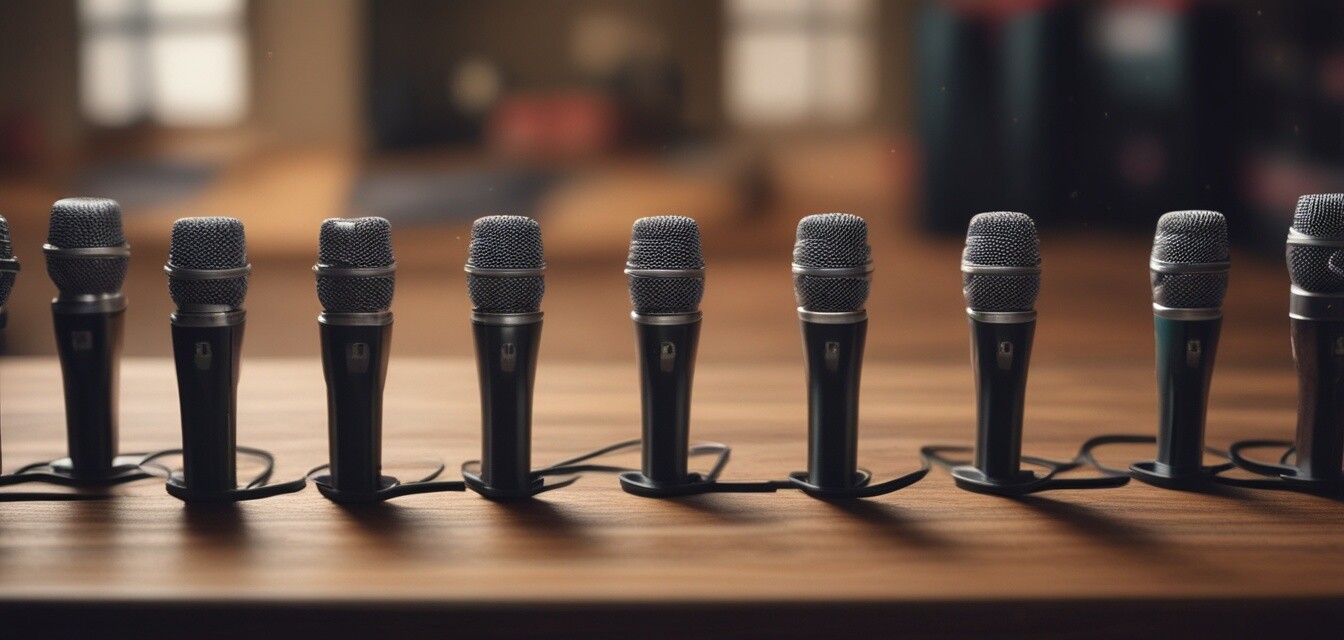
How to Choose the Right Microphone for Your Needs
- Identify your primary use: podcasting, streaming, or recording.
- Choose between dynamic and condenser microphones based on your environment.
- Consider connectivity options: USB vs XLR.
- Look for additional features like built-in pop filters and shock mounts.
- Test the microphone if possible to achieve the best sound quality for your needs.
Choosing the right microphone can be overwhelming, especially with so many options available. Whether you're a podcaster, streamer, or looking to record high-quality audio, understanding the different types of microphones and their applications is essential. This guide will help you navigate through various microphone options to find the perfect fit for your needs.
Understanding Different Types of Microphones
| Type | Description | Best For |
|---|---|---|
| Dynamic Microphones | Robust and versatile, ideal for loud sound sources. | Live performances, vocals, and instruments. |
| Condenser Microphones | Highly sensitive, capturing subtle details and a wide frequency range. | Studio recording, podcasting, and voice-overs. |
| USB Microphones | Simple plug-and-play design, connects directly to a computer. | Streaming, gaming, and beginner podcasters. |
Selecting the Right Microphone Based on Usage
1. Podcasting
For podcasting, sound quality is key, and using a quality microphone will elevate your production value. Here are some options:
- Condenser Microphone: Great for vocals; it captures rich detail.
- USB Microphone: Perfect for beginners due to easy setup.
2. Streaming
If you're a streamer, consider the following:
- Dynamic Microphone: Ideal for reducing background noise.
- USB Microphone: Convenient and typically budget-friendly.
3. Recording
For music or studio recordings, a quality microphone is vital:
- Condenser Microphone: Excellent for studio work, capturing nuances.
- Dynamic Microphone: Good for live recording and band setups.
Important Features to Consider
When choosing a microphone, additional features can significantly impact your recording quality:
- Built-in Pop Filters: Help reduce plosives and improve sound clarity.
- Shock Mounts: Minimize vibrations that can affect audio quality.
- Frequency Response: Understand the range your microphone covers.
Connectivity Options
Another essential aspect is the connectivity of the microphone:
| Type | Connectivity | Pros | Cons |
|---|---|---|---|
| USB | Direct connection to computers. | Easy to set up and use. | Limited in audio quality compared to XLR. |
| XLR | Connects through audio interfaces. | Higher audio quality, more versatile. | Requires additional equipment like mixers. |
Final Thoughts
Choosing the right microphone can greatly influence the quality of your audio production, whether it's for podcasting, streaming, or recording. Understanding the types of microphones available and evaluating them based on your needs will help ensure you make the right choice.
TOPTRO TR27 Mini Projector
A portable projector that supports 4K video and is perfect for home cinema, gaming, and outdoor use.
Learn MoreTips for Beginners
When selecting your microphone, here are some quick tips to keep in mind:
- Read reviews and seek recommendations from fellow creators.
- Buy from reputable brands that offer good customer service.
- Try the microphone before purchasing it if possible.
Explore More Resources
For additional tips on maximizing your new microphone's potential, explore more of our photography accessories and our extensive range of wearable technology. Understanding how to utilize your gadgets well complements the hardware selection process.

